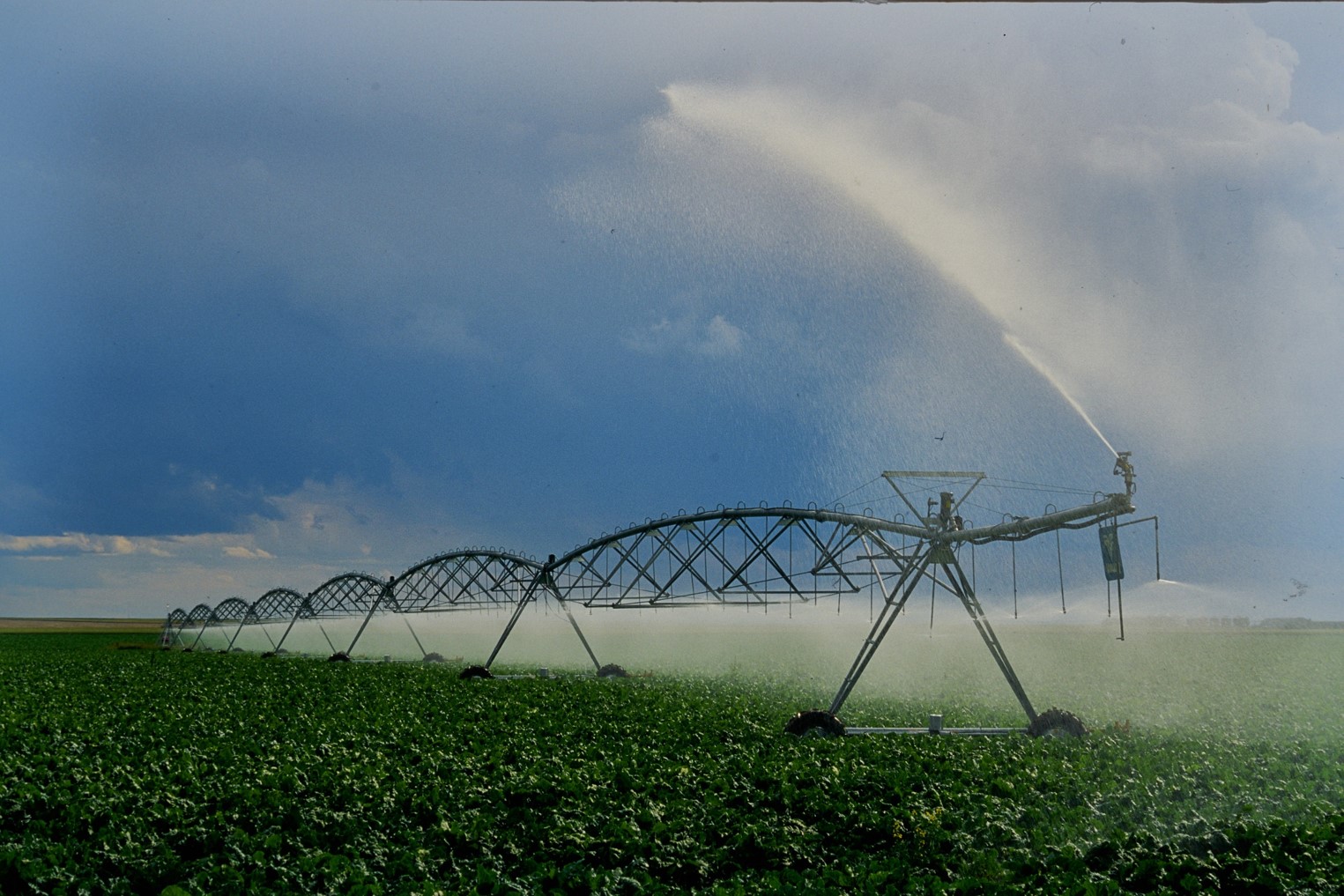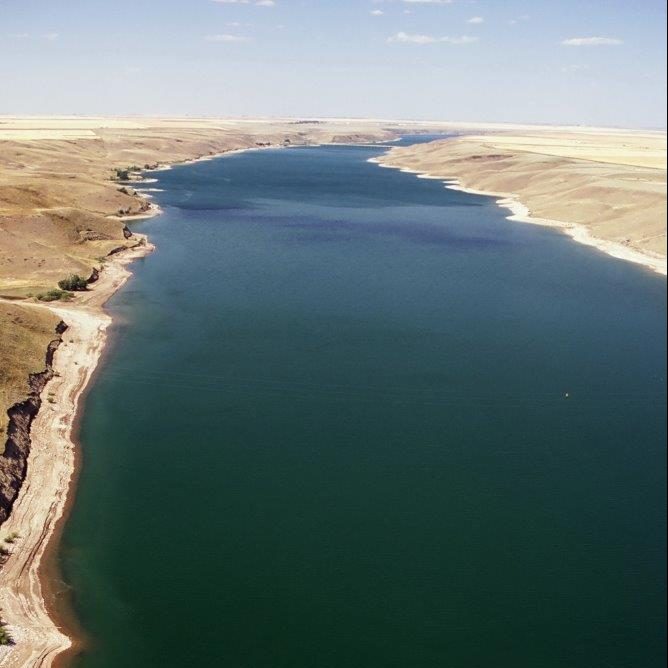
Alberta Plans Irrigation Expansion, Prairies Prepare for Drought
May 21, 2024
- •
- •
- •
Amid ongoing drought, Alberta is continuing its “historic” irrigation expansion in the South Saskatchewan River Basin.

Photo © C. Bradley
By Ruiping Luo
Read the PDF version here.
Amid ongoing drought, Alberta is continuing its “historic” irrigation expansion in the South Saskatchewan River Basin (SSRB), pouring hundreds of millions of dollars towards growing water-loving plants in the driest part of the province. The project will further deplete rivers and destroy some of the last remaining sections of native prairie, as Alberta Wilderness Association (AWA) and other environmental groups have repeatedly warned. These warnings have largely been ignored.
In 2020, the Government of Alberta, in partnership with the Canadian Infrastructure Bank and eight irrigation districts, announced a $815 million investment into irrigation in southern Alberta By 2021, another $118 million had been added, and two more irrigation districts had joined. The project claimed it would “improve water use efficiency” and “increase water security,” and expand irrigated agriculture by an estimated 230,000 acres of land. The “increased efficiency” is supposed to make up the extra water needed to expand, according to the proposal. The project was announced without public consultation, and details about the project have been scarce, despite attempts by environmental groups to understand more about the project.
In times of drought, irrigation is often presented as a solution, and this project is no exception. Much of the justification around this investment centres on the necessity of irrigation for crop growth in southern Alberta, which has faced drought conditions for the past three years and is expected to have another dry growing season this summer. With climate change, these drought conditions are only expected to become worse in the coming years.
The project involves the expansion of four reservoirs, among them the Chin Lake and Snake Lake reservoirs. The potential benefits, such as reduced reliance on rainfall and more control of water supply during drought seasons, are highlighted in the project proposals for each. Both expansion projects were required to undergo Environmental Impact Assessments (EIA). . The proposed terms of reference for the Snake Lake EIA and the final terms of reference for the Chin Reservoir EIA have been released. AWA provided comments on both, emphasising their failure to adequately address water conservation objectives, native habitat destruction, and the negative consequences of reservoirs and irrigation on climate change.
It is true that reservoirs and irrigation can improve water control and could provide some resilience during droughts. However, reservoirs can also contribute to climate change and exacerbate drought conditions. Reservoir surfaces release billions of tonnes of greenhouse gases a year, mostly from landscape disturbance during construction and underwater microbial activity that creates methane (CH4), carbon dioxide (CO2), nitrous oxide (N2O) and other gases. The release of carbon is often worse when irrigation floods native prairie, as the Snake Lake Reservoir Expansion proposes, since native prairie stores significant amounts of carbon that will be released during construction.
As well, reservoirs can increase evaporation. The AIM program promotes an intention to modernise and increase water efficiency by converting open canals to underground pipelines, decreasing water loss from evaporation. Supposedly, modernization of Alberta’s irrigation system will allow irrigation to be expanded without withdrawing more water. Yet, the higher evaporation from the increased surface area of expanded reservoirs may well equal or even exceed the water loss from canals, especially during the hot summers. Given the multi-year drought we are in, we cannot afford to lose more water.
Alberta is again bracing for drought. Water reserves are running low, rivers are becoming shallower, and the glaciers that contribute to summer flows are receding. The news is filled with discussions of water restrictions and reducing water use. In these circumstances — and with irrigation already by far the largest user of Alberta’s water — irrigation expansion is completely inappropriate.

Upper Chin Reservoir East of Hwy 36. Photo © C. Bradley
Irrigation is a system that locks in reliance on water. Irrigated crops are often selected for their value or their yield instead of drought tolerance, making them more vulnerable to water scarcity than dryland crops. As well, irrigation can negatively affect the soil. Physically, irrigation can erode soils and cause a loss of nutrients, reducing soil health and making new plant growth more difficult. It affects the microbial community, which determines the nutrient content and drought tolerance of the soil. It can change the plant communities of nearby lands, encouraging the growth of more competitive, water-loving plants over the drought-tolerant native communities. As a result, when the rivers and reservoirs run dry, the devastation in irrigated acres could be far worse than for dryland farming.
There are other options. For instance, crop switching – switching to crops more suited to a drier climate – has helped reduce water use in the United States, India and China. Crop switching was more effective in reducing water use than improving irrigation efficiency, and in many cases, crop switching also increased farmer profits. Crop rotation, the alternating use of different crops that have various water and nutrient requirements, has also been found to aid in soil structure and water retention, increasing water-use efficiency by up to 40 percent. Increasing the organic matter in soil, by leaving crop residues, can also benefit water retention, and the use of mulches or organic litter helps to shade soil and reduce evaporation. These techniques may aid in improving dryland farming without expanding irrigation.
As well, rather than building more dams and pipelines, perhaps we should be investing in ecosystems. For instance, wetlands can capture excess water during wet periods, slowly releasing the water during dry periods and acting as a source of water during extended droughts. Healthy native grasslands are well-adapted to extreme drought, with deep roots that not only allow plants to reach lower pools of water, but also improve water infiltration and retention in the soil. Some native plants, such as sagebrush, can also enhance surface soil water by lifting deep water through its root system, supporting other plants with shallow roots. Riparian ecosystems, the ecological community that thrives near and supports rivers and lakes, reduce drought severity by shading river water and reducing evaporation. Riparian communities also help to bring water from the river into the soil through their root systems, improving groundwater recharge. These benefits are lost as the natural community is disturbed, though they can be regained through careful restoration and cultivation of these important ecosystems.
Drought is a major concern for southern Alberta and is likely to become worse as climate change progresses. However, the South Saskatchewan River Basin irrigation expansion and other proposed expansions — such as in the Special Areas of Alberta — are likely to cause more harm than good. Other options, such as enhancing the efficiency of dryland farming and improving or restoring native ecosystems, may provide more long-term benefits and should be thoroughly explored before considering irrigation expansion.